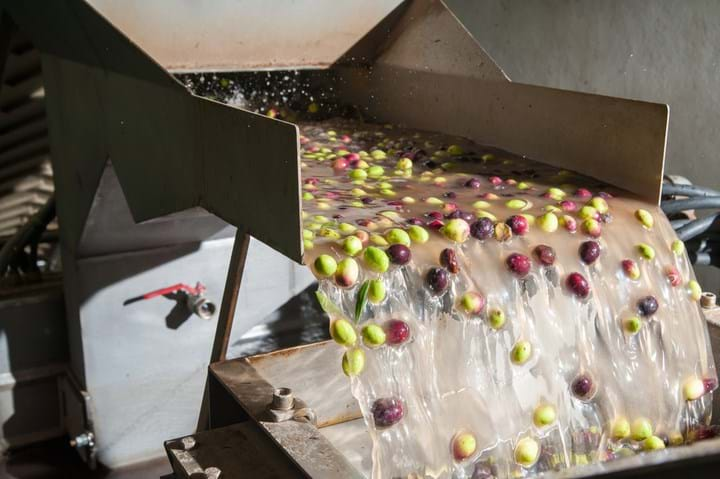An olive branch for a circular economy
RESEARCHERS have piloted a process to turn a waste stream from olive oil manufacture into biofuel, bio-fertiliser and safe water for use in crop irrigation.

In Mediterranean countries, olive oil manufacture results in around 36bn L of waste water and solid residue that can foul waterways, reduce soil fertility, and trigger extensive damage to nearby ecosystems.
This waste stream is tricky to dispose of, with techniques such as burning it using mixtures of solid waste or waste wood proving costly, technically complex, or resulting in excessive air pollution.
A gallery of the current disposal of wastewater in basins. Photos show a recent basin (very liquid) and old basin (paste-like)
After testing various techniques for the treatment of the water, a team of researchers from France and Tunisia have published a new method of treatment in ACS Sustainable Chemistry & Engineering.
Mejdi Jeguirim, lecturer at Institut de Science des Matériaux de Mulhouse, France, spoke to The Chemical Engineer about the team’s work.
“This project offers the possibility of managing olive mill waste water as a source of nutrients for plants,” he said, “The objective is to use local resources in a simple way in order to develop a circular economy.”
To do so, a multistage process was applied, which included using sawdust from cypress trees – another common wastestream in the Mediterranean.

Organic compounds such as polyphenols, and nitrogen, potassium, and phosphorus nutrients from the water are embedded into the sawdust. This accelerated drying in a convective dryer and the evaporated water recovered. This could then potentially be used for non-polluting crop irrigation.
Next, the researchers subjected the dried mixture to pyrolysis at 500°C. When exposed to high temperature without oxygen, the material didn’t combust, but was thermally decomposed into volatile gases and biochar.
The gases were then condensed into bio-oil, which the MICA Carnot Institute-funded team hope could eventually be used as a heat source during the sawdust-drying step, and for pyrolysis. Finally, they collected the biochar pellets, rich in potassium, phosphorus and nitrogen, and demonstrated their use as biofertilisers upon rye-grass growth in flowerpots.
Jeguirim said: “The proposed strategy has the advantages of low cost, the simplicity and also to fully recover the oil mill waste water.
“The process has been tested at laboratory scale, with pilot setup allowing us to manage grammes of biomass. The next steps consist of char production in an industrial plant located in Tunisia and biofertiliser tests in olive tree fields for a circular economy approach.”
ACS Sustainable Chemistry & Engineering: http://doi.org/cdqb
Recent Editions
Catch up on the latest news, views and jobs from The Chemical Engineer. Below are the four latest issues. View a wider selection of the archive from within the Magazine section of this site.




